The Perfect Lacrosse Stick Length for Optimal PerformanceThe Perfect Lacrosse Stick Length for Optimal Performance
Finding the Perfect Length for Youth Lacrosse Sticks
When it comes to youth lacrosse, proper stick length is crucial for young players’ success. Choosing the right length lax stick allows better control, quicker passes, more fluid cradling, and more powerful shots. But how do you determine what length is ideal?
For young lacrosse athletes, stick length corresponds with age and position. Attack players tend to use shorter sticks for better ball control, while defenders opt for longer poles to intercept passes. Girls’ sticks are shorter than boys’ at all ages due to average height differences. The key is finding the length that lets your child handle the ball comfortably without overextending their arms.
Most youth leagues require specific lacrosse stick lengths based on age. For example, many set 30-40 inches as the standard for players under 8, 40-52 inches for ages 9-10, and 52-72 inches for 11-12 years old. Some even dictate exact lengths like a 36-inch stick for U9 boys. Always check your league rules before buying!
The best way to find the optimum youth stick length is to have your child hold a stick straight out in front of them with their arm fully extended. The head of the stick should reach somewhere between their nose and their chin. Much longer and they won’t have proper control when cradling and passing. Too short, and their range of motion will be restricted when trying to scoop ground balls or check opponents’ sticks.
Don’t rely on height and age charts alone when sizing up youth lax sticks. The most accurate method is having your kid test out different lengths to see what gives them the best command of the ball. Watch them catch, cradle and pass to examine their comfort level and coordination with each stick length before deciding.
With the right sized lacrosse stick, young players can develop their skills with greater confidence and less frustration. Take the time to properly fit them with a length that enhances their ability to handle the ball, and you’ll give them the best chance to excel.
Standard Lengths for Women’s Lacrosse Sticks
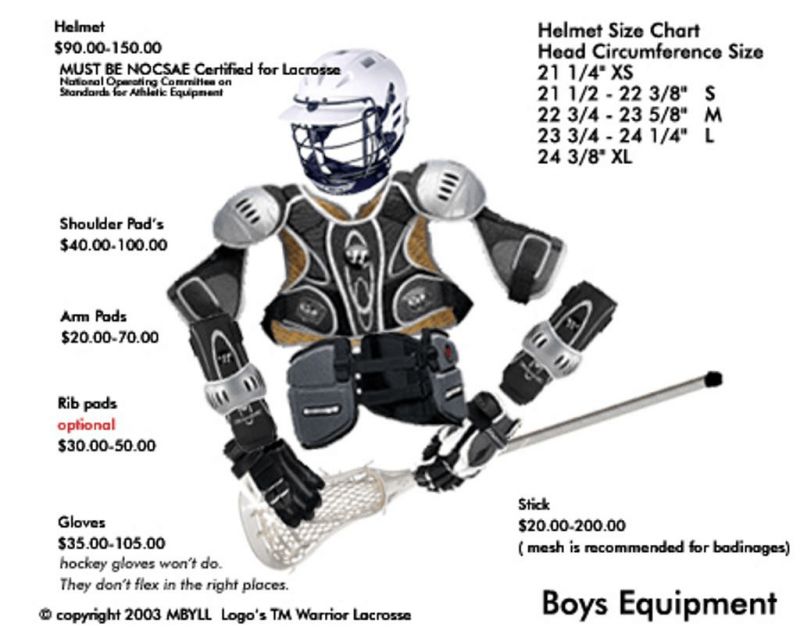
When it comes to women’s lacrosse stick lengths, there are some general standards to follow based on position. For female players, stick length tends to range from 35 to 43 inches depending on age and role on the field. Knowing the typical lengths for women’s lacrosse sticks can help ensure you get the right size.
High school and college women’s sticks are usually somewhere between 35 and 37 inches long. Youth sticks run shorter, normally 30 to 35 inches. Goalies use a longer stick around 40 to 43 inches to help protect more of the net. Attack players who need superior ball control often opt for the shorter end of the range. Defenders tend to size up for more reach on checks and intercepting passes.
Women’s lacrosse sticks run shorter than men’s primarily due to average height differences between genders. But a shorter stick doesn’t mean less performance. The optimal length allows players to cradle smoothly, pass crisply, scoop ground balls with ease, and rip off accurate shots.
When trying to find the right length lax stick, extend your arms directly out holding the stick. The head of the stick should reach your nose or just below your chin. If it sits much above or below this range, you may want to try a different length. Testing out various sizes is the best way to find what gives you the handling and control you need.
While general women’s lacrosse stick length ranges exist, your ideal size depends on your height, position, and personal preference. Goalies opt for maximum net coverage, defenders need check reach, and attack players prioritize ball control. Try sticks in multiple lengths to see what feels best for your game before deciding.
With the standard lengths for women’s lacrosse sticks in mind, you can zero in on the size that gives you the quick passing, smooth cradling and powerful shooting you need to raise your game to the next level.
Men’s Lacrosse Stick Length Standards
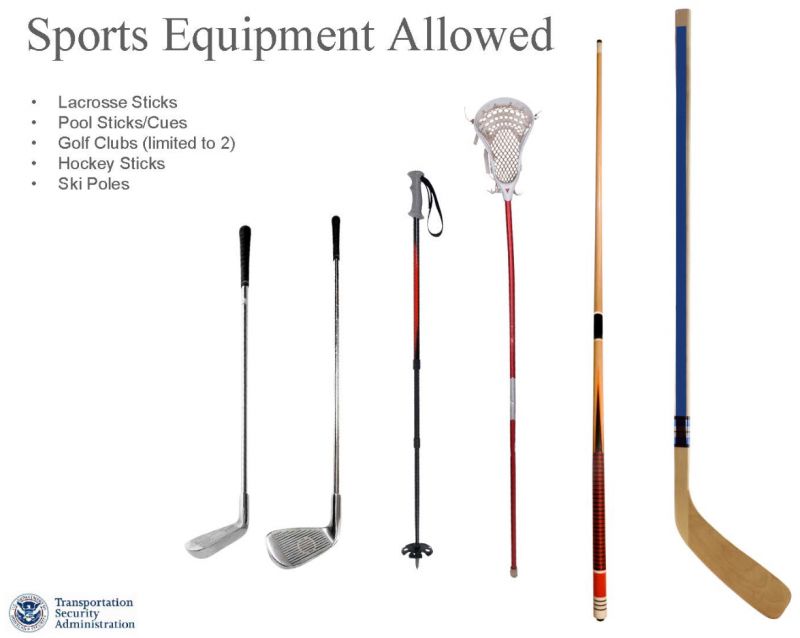
When sizing up men’s lacrosse sticks, you’ll find some general length standards to follow. Knowing the typical stick lengths for men’s lacrosse positions can help guide you in choosing the right size.
For men’s field lacrosse, attack and midfield sticks generally range from 30 to 42 inches long. Defense shafts run 50 to 72 inches, with long poles around 60 inches being common. Goalie sticks are normally around 40 to 72 inches to help fill more of the 6×6 goal.
In box lacrosse, also known as indoor lacrosse, stick lengths tend to run shorter due to the confined space. Attack and midfield sticks are usually 20 to 32 inches. Defense poles typically max out around 42 inches due to the smaller goals. Box goalies use sticks around 40 to 48 inches long.
Longer sticks allow for wider passing lanes, extended checking range, and more power on shots and passes. But length can sacrifice some ball control and handling quickness. Shorter sticks provide tighter command of the ball for stick tricks, quicker feeds, and threading tight passes.
To find your ideal men’s stick length, extend your arms holding the stick straight out. The head should reach between your nose and chin. This allows for full range of motion during cradling, scooping, passing and shooting. If the stick head sits way above or below this zone, a different length may be better.
While general men’s lacrosse stick length ranges exist, your optimum size depends on playing style, position and personal preference. Trying out various lengths is the best way to dial in a stick length that maximizes your performance.
With the typical men’s lacrosse stick lengths in mind, you can zero in on just the right size stick to take your game to the next level.
Ideal Lacrosse Stick Lengths by Position
Youth Lacrosse Stick Length: Finding the Perfect Fit
For young lacrosse players, selecting the right stick length is crucial for developing proper techniques and enjoying the game. Youth leagues often have specific requirements for stick lengths based on age groups, so it’s essential to familiarize yourself with these regulations before making a purchase.
Age-Based Stick Length Guidelines for Youth Players
- Under 8 years old: 30-40 inches
- 9-10 years old: 40-52 inches
- 11-12 years old: 52-72 inches
Keep in mind that these are general guidelines, and individual leagues may have more specific requirements. Always check with your local league for exact specifications.
Determining the Ideal Stick Length for Young Players
To find the optimal stick length for a youth player, have them hold the stick straight out in front with their arm fully extended. The ideal length is achieved when the head of the stick reaches somewhere between their nose and chin. This ensures proper control during cradling, passing, and shooting without restricting their range of motion.

It’s important to note that relying solely on height and age charts may not always yield the best results. Encourage young players to test different stick lengths to find the one that provides the best ball control and overall comfort.
Women’s Lacrosse Stick Length: Standards and Considerations
Women’s lacrosse stick lengths typically range from 35 to 43 inches, depending on the player’s age, position, and personal preference. Understanding the standard lengths for women’s lacrosse sticks can help players choose the right size to enhance their performance on the field.
Position-Specific Stick Lengths for Women’s Lacrosse
- Attack players: 35-37 inches
- Midfielders: 35-37 inches
- Defenders: 35-37 inches
- Goalies: 40-43 inches
While these ranges provide a general guideline, it’s essential to consider individual factors such as height, playing style, and comfort when selecting a stick length.
Factors Influencing Women’s Lacrosse Stick Length Choice
- Player height: Taller players may prefer slightly longer sticks for better reach.
- Position: Attackers often opt for shorter sticks for improved ball control, while defenders may choose longer sticks for increased checking range.
- League regulations: Always check your league’s specific rules regarding stick lengths.
- Personal preference: Some players may feel more comfortable with a stick length that deviates slightly from the standard range.
When trying to find the right length for a women’s lacrosse stick, have the player extend their arms straight out while holding the stick. The head of the stick should reach their nose or just below their chin for optimal control and maneuverability.
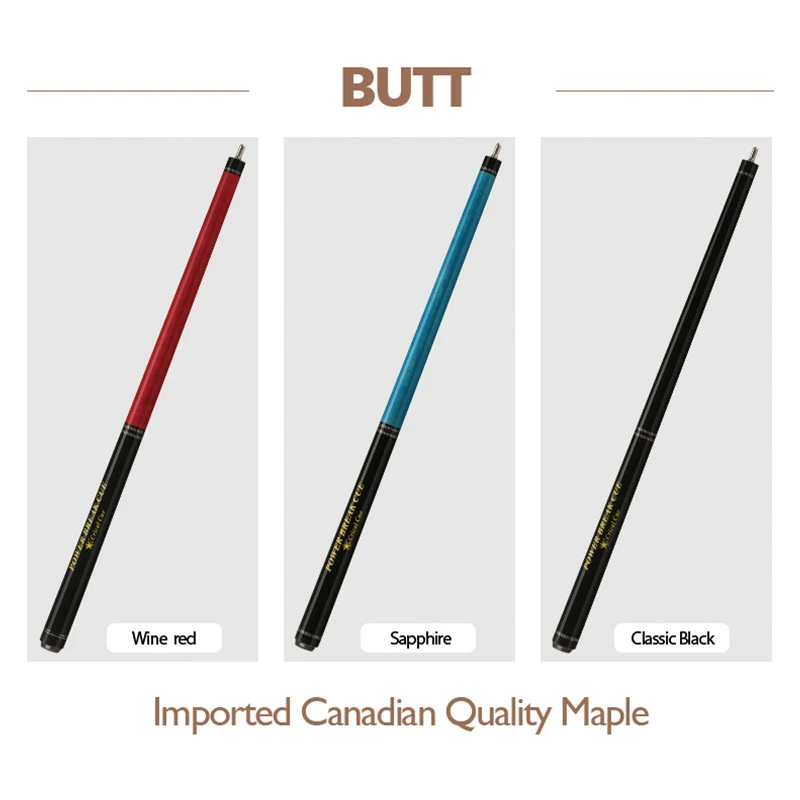
Men’s Lacrosse Stick Length: Standards for Field and Box Lacrosse
Men’s lacrosse stick lengths vary significantly depending on the player’s position and whether they’re playing field or box lacrosse. Understanding these differences is crucial for selecting the appropriate stick length to maximize performance.
Field Lacrosse Stick Length Standards
- Attack and Midfield: 30-42 inches
- Defense: 50-72 inches (commonly around 60 inches)
- Goalie: 40-72 inches
Box Lacrosse Stick Length Standards
- Attack and Midfield: 20-32 inches
- Defense: Up to 42 inches
- Goalie: 40-48 inches
The shorter stick lengths in box lacrosse are due to the confined playing space and smaller goals compared to field lacrosse. This adaptation allows for quicker stick handling and maneuverability in tight spaces.
The Impact of Stick Length on Playing Style and Performance
The length of a lacrosse stick can significantly influence a player’s style and effectiveness on the field. Understanding these impacts can help players make informed decisions when selecting their ideal stick length.

Advantages of Longer Lacrosse Sticks
- Increased reach for defensive players
- Wider passing lanes
- More power on shots and passes
- Better ability to intercept passes
Benefits of Shorter Lacrosse Sticks
- Enhanced ball control and handling
- Improved maneuverability in tight spaces
- Quicker release on shots and passes
- Easier to protect the ball from defenders
Players must weigh these factors against their position requirements and personal playing style to determine the optimal stick length for their needs.
Customizing Stick Length for Individual Players
While standard stick lengths provide a good starting point, many players benefit from customizing their stick length to suit their unique physical attributes and playing style. Here are some factors to consider when fine-tuning your lacrosse stick length:
Factors to Consider When Customizing Stick Length
- Player height and arm length
- Strength and physical build
- Playing position and role on the team
- Personal comfort and preference
- League regulations and restrictions
Experimenting with different stick lengths within the allowable range can help players find their perfect fit. It’s often beneficial to test various lengths during practice sessions to determine which provides the best balance of control, power, and comfort.
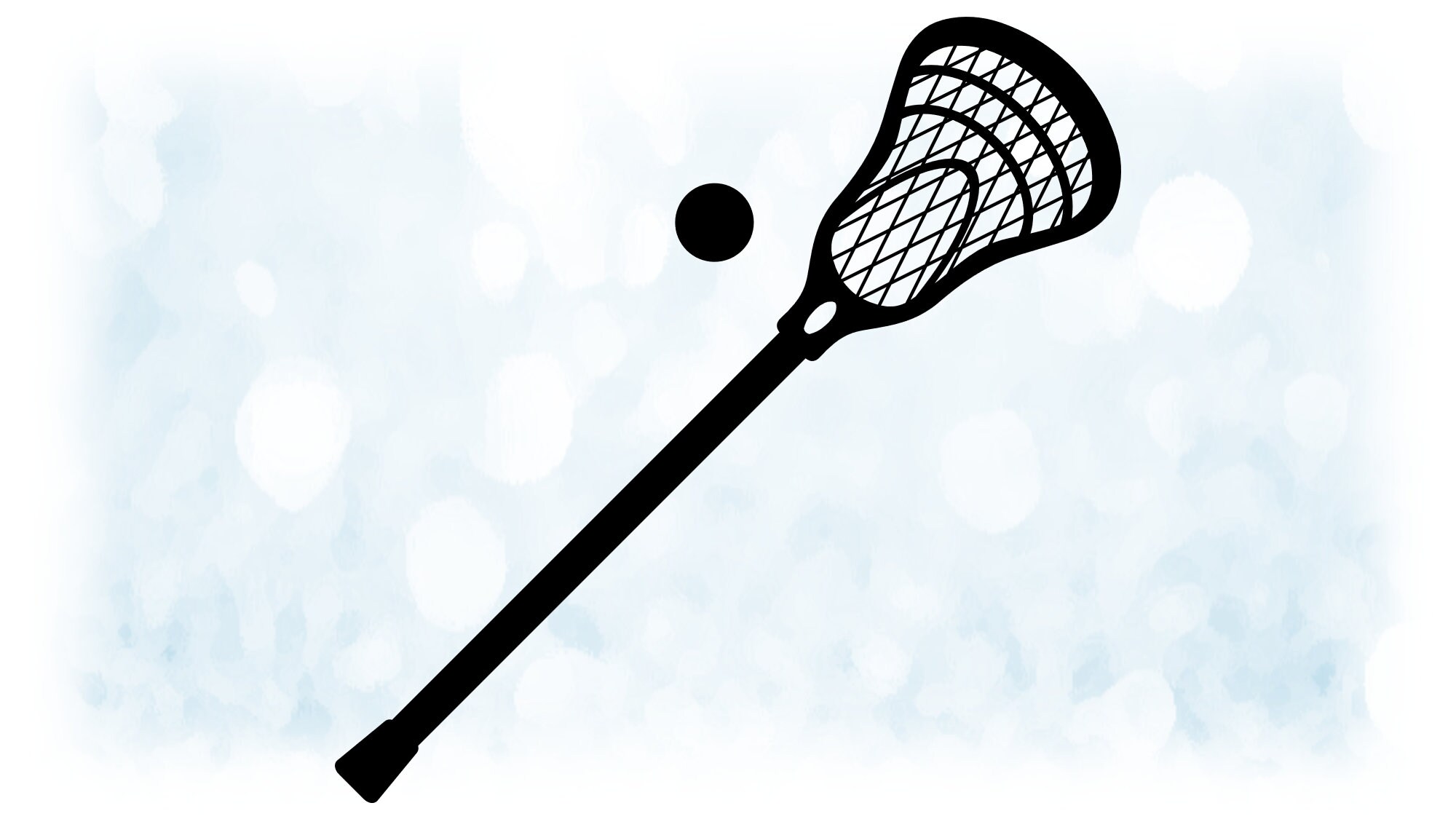
The Role of Stick Length in Defensive Play
Defensive players in lacrosse often utilize longer sticks to enhance their effectiveness on the field. Understanding how stick length impacts defensive capabilities can help players and coaches make informed decisions about equipment choices.
Advantages of Longer Sticks for Defenders
- Increased reach for checking and disrupting offensive plays
- Better ability to intercept passes
- Enhanced leverage for ground ball pickups
- Improved capability to protect larger areas of the field
While longer sticks offer these advantages, defenders must also consider the potential drawbacks, such as reduced maneuverability and the need for greater strength to control the longer shaft effectively.
Balancing Stick Length with Defensive Techniques
Defensive players must learn to balance the benefits of a longer stick with proper positioning and footwork. A longer stick can be a powerful tool, but it should not be relied upon as a substitute for sound defensive fundamentals. Coaches should focus on teaching defenders how to maximize the advantages of their stick length while maintaining agility and proper defensive stance.

Optimizing Stick Length for Offensive Players
Offensive players in lacrosse typically prefer shorter sticks for enhanced ball control and maneuverability. However, the ideal stick length can vary depending on the player’s specific role and playing style within the offensive unit.
Considerations for Attack Players
- Quick release on shots and passes
- Superior ball protection in tight spaces
- Enhanced ability to change direction rapidly
- Improved control for intricate stick tricks and dodges
Midfield-Specific Stick Length Factors
- Balance between offensive and defensive capabilities
- Versatility for both attacking and defending situations
- Ability to cover large areas of the field effectively
- Potential need for longer stick to aid in defensive play
Offensive players should experiment with different stick lengths within the legal range to find the perfect balance between control, speed, and power that suits their playing style and position.
The Evolution of Lacrosse Stick Length Regulations
Lacrosse stick length regulations have evolved over time, reflecting changes in playing styles, player safety concerns, and efforts to maintain competitive balance. Understanding this evolution can provide valuable context for current stick length standards and potential future changes.

Historical Perspective on Stick Length Rules
In the early days of modern lacrosse, there were fewer restrictions on stick lengths, leading to a wide variety of stick sizes on the field. As the sport developed and became more standardized, governing bodies began implementing more specific regulations to ensure fair play and consistent equipment standards across different levels of competition.
Current Trends in Stick Length Regulations
Recent years have seen a trend towards more precise stick length specifications, particularly in youth leagues. These changes aim to promote proper skill development and ensure that young players use equipment appropriate for their age and physical development. At higher levels of play, there’s an ongoing discussion about the balance between allowing player customization and maintaining consistent standards across the sport.
Technology and Innovation in Lacrosse Stick Design
Advancements in materials science and manufacturing techniques have led to significant innovations in lacrosse stick design, impacting not only stick length but also overall performance and durability.

Impact of New Materials on Stick Length and Performance
- Lightweight, high-strength alloys allowing for longer sticks without sacrificing maneuverability
- Composite materials offering improved flex and energy transfer for more powerful shots
- Advanced grip technologies enhancing control across various stick lengths
Customizable and Adjustable Stick Designs
Some manufacturers are exploring modular stick designs that allow players to adjust the length of their stick within legal limits. This innovation could provide players with greater flexibility to adapt their equipment to different game situations or as they grow and develop their skills.
The Psychological Aspect of Stick Length Choice
The choice of lacrosse stick length can have psychological impacts on players, affecting their confidence, playing style, and overall approach to the game. Understanding these psychological factors can help players make more informed decisions about their equipment.
Confidence and Comfort
Players often develop a strong preference for a particular stick length based on their comfort level and past experiences. This familiarity can boost confidence on the field, leading to improved performance. Conversely, being forced to use an unfamiliar stick length due to regulations or other factors may temporarily impact a player’s confidence and effectiveness.

Adapting to New Stick Lengths
As players progress through different age groups or levels of play, they may need to adapt to new stick length requirements. This adjustment period can be challenging but also presents an opportunity for skill development and refinement of playing techniques.
Maintenance and Care for Lacrosse Sticks of Various Lengths
Proper maintenance and care of lacrosse sticks are essential for optimal performance and longevity, regardless of their length. However, sticks of different lengths may require slightly different care approaches.
General Maintenance Tips for All Stick Lengths
- Regular cleaning to remove dirt and debris
- Proper storage to prevent warping or damage
- Periodic checks for loose screws or components
- Replacement of worn strings or mesh
Length-Specific Care Considerations
Longer defensive poles may require extra attention to ensure the shaft remains straight and undamaged. Shorter attack sticks might need more frequent head adjustments due to the intense physical contact they endure during gameplay. Understanding these nuances can help players maintain their equipment effectively, regardless of stick length.

The Future of Lacrosse Stick Length: Trends and Predictions
As lacrosse continues to evolve, so too may the regulations and trends surrounding stick lengths. Staying informed about potential changes and emerging technologies can help players, coaches, and equipment manufacturers prepare for the future of the sport.
Potential Rule Changes
Some lacrosse experts predict that future rule changes may further refine stick length regulations, potentially introducing more position-specific requirements or allowing for greater customization within certain limits. These changes could be driven by efforts to enhance player safety, improve game flow, or address competitive balance concerns.
Technological Advancements
Ongoing innovations in materials science and manufacturing techniques may lead to the development of lacrosse sticks with variable or adjustable lengths. This could allow players to fine-tune their stick length for different game situations or as they progress in their skills and physical development.

As the sport of lacrosse continues to grow and evolve, the importance of choosing the right stick length remains constant. Whether you’re a youth player just starting out, a seasoned veteran looking to refine your game, or a coach guiding your team to success, understanding the nuances of lacrosse stick length can provide a significant competitive advantage. By considering factors such as playing position, individual physique, and personal style, players can optimize their equipment choices to enhance their performance on the field. As technology and regulations continue to shape the future of lacrosse, staying informed about stick length trends and innovations will be crucial for players and coaches alike.
Finding the Perfect Length for Youth Lacrosse Sticks
When it comes to youth lacrosse, proper stick length is crucial for young players’ success. Choosing the right length lax stick allows better control, quicker passes, more fluid cradling, and more powerful shots. But how do you determine what length is ideal?
For young lacrosse athletes, stick length corresponds with age and position. Attack players tend to use shorter sticks for better ball control, while defenders opt for longer poles to intercept passes. Girls’ sticks are shorter than boys’ at all ages due to average height differences. The key is finding the length that lets your child handle the ball comfortably without overextending their arms.
Most youth leagues require specific lacrosse stick lengths based on age. For example, many set 30-40 inches as the standard for players under 8, 40-52 inches for ages 9-10, and 52-72 inches for 11-12 years old. Some even dictate exact lengths like a 36-inch stick for U9 boys. Always check your league rules before buying!
The best way to find the optimum youth stick length is to have your child hold a stick straight out in front of them with their arm fully extended. The head of the stick should reach somewhere between their nose and their chin. Much longer and they won’t have proper control when cradling and passing. Too short, and their range of motion will be restricted when trying to scoop ground balls or check opponents’ sticks.
Don’t rely on height and age charts alone when sizing up youth lax sticks. The most accurate method is having your kid test out different lengths to see what gives them the best command of the ball. Watch them catch, cradle and pass to examine their comfort level and coordination with each stick length before deciding.
With the right sized lacrosse stick, young players can develop their skills with greater confidence and less frustration. Take the time to properly fit them with a length that enhances their ability to handle the ball, and you’ll give them the best chance to excel.
Standard Lengths for Women’s Lacrosse Sticks

When it comes to women’s lacrosse stick lengths, there are some general standards to follow based on position. For female players, stick length tends to range from 35 to 43 inches depending on age and role on the field. Knowing the typical lengths for women’s lacrosse sticks can help ensure you get the right size.
High school and college women’s sticks are usually somewhere between 35 and 37 inches long. Youth sticks run shorter, normally 30 to 35 inches. Goalies use a longer stick around 40 to 43 inches to help protect more of the net. Attack players who need superior ball control often opt for the shorter end of the range. Defenders tend to size up for more reach on checks and intercepting passes.
Women’s lacrosse sticks run shorter than men’s primarily due to average height differences between genders. But a shorter stick doesn’t mean less performance. The optimal length allows players to cradle smoothly, pass crisply, scoop ground balls with ease, and rip off accurate shots.
When trying to find the right length lax stick, extend your arms directly out holding the stick. The head of the stick should reach your nose or just below your chin. If it sits much above or below this range, you may want to try a different length. Testing out various sizes is the best way to find what gives you the handling and control you need.
While general women’s lacrosse stick length ranges exist, your ideal size depends on your height, position, and personal preference. Goalies opt for maximum net coverage, defenders need check reach, and attack players prioritize ball control. Try sticks in multiple lengths to see what feels best for your game before deciding.
With the standard lengths for women’s lacrosse sticks in mind, you can zero in on the size that gives you the quick passing, smooth cradling and powerful shooting you need to raise your game to the next level.
Men’s Lacrosse Stick Length Standards

When sizing up men’s lacrosse sticks, you’ll find some general length standards to follow. Knowing the typical stick lengths for men’s lacrosse positions can help guide you in choosing the right size.
For men’s field lacrosse, attack and midfield sticks generally range from 30 to 42 inches long. Defense shafts run 50 to 72 inches, with long poles around 60 inches being common. Goalie sticks are normally around 40 to 72 inches to help fill more of the 6×6 goal.
In box lacrosse, also known as indoor lacrosse, stick lengths tend to run shorter due to the confined space. Attack and midfield sticks are usually 20 to 32 inches. Defense poles typically max out around 42 inches due to the smaller goals. Box goalies use sticks around 40 to 48 inches long.
Longer sticks allow for wider passing lanes, extended checking range, and more power on shots and passes. But length can sacrifice some ball control and handling quickness. Shorter sticks provide tighter command of the ball for stick tricks, quicker feeds, and threading tight passes.
To find your ideal men’s stick length, extend your arms holding the stick straight out. The head should reach between your nose and chin. This allows for full range of motion during cradling, scooping, passing and shooting. If the stick head sits way above or below this zone, a different length may be better.
While general men’s lacrosse stick length ranges exist, your optimum size depends on playing style, position and personal preference. Trying out various lengths is the best way to dial in a stick length that maximizes your performance.
With the typical men’s lacrosse stick lengths in mind, you can zero in on just the right size stick to take your game to the next level.
Ideal Lacrosse Stick Lengths by Position
Lacrosse stick length often varies by player position. Attack, midfield, defense, and goalie each have optimal stick sizes based on their roles and needs on the field. Understanding these position-specific lengths can help you choose the right lacrosse stick.
For attack players, shorter sticks in the 30-42 inch range provide tighter control for stick tricks, quicker passing, and threading feeds through small openings. Midfielders balance control and power with 32-42 inch sticks for scooping ground balls, taking face-offs, and ripping shots.
Defenders benefit from extra length like 50-72 inches for wider passing lanes, more checking range, and blocking more of the goal. Goalie sticks run 40-72 inches to fill more of the net and clear the ball downfield. Longer poles also generate harder shots, passes and checks.
But length isn’t everything. Proper lacrosse stick sizing depends on your height, arm span and personal style. Trying different lengths to find the optimal balance of control and power for your position is key. An attack stick that is too long limits quick feeds and tight cradling, while too short restricts passing range.
Test out various stick lengths during practice to see how they perform in game situations. Scoop ground balls, cradle and pass looking for the length that provides the control and shooting power you need. The right size stick accentuates your strengths in your role.
While ideal lacrosse stick sizes exist for each position, finding your optimum length requires experimenting with different shafts. With the length tailored for your position, you gain every advantage to excel on the field.
Precisely Measuring Your Lacrosse Stick’s Length

Knowing the exact length of your lacrosse stick is important for determining if it meets size regulations and fits you properly. Here are some tips for precisely measuring your stick’s length:
Use a cloth measuring tape rather than relying on any markings on the shaft. Extend the tape from the top of the head to the end of the shaft, following any curves. For accuracy, pull the tape tight without stretching it. Record the measurement to the nearest 1/4 inch.
Measure along the front of the head instead of the back, as defined in most lacrosse stick regulations. This runs from the top of the scoop to the ball stop at the throat. Following official measurement conventions ensures an accurate length.
Make sure the head is fully seated and screwed into the shaft before measuring. Push it down to remove any gaps between the plastic and metal. This prevents an artificially longer length reading.
Account for any end cap on the stick by pressing down firmly when the end meets resistance. Remove any cap and measure to the bare end for the true shaft length. Subtract the cap’s thickness if needed.
Measure from a flat surface with the stick laying horizontally along the tape. Keeping it straight avoids inconsistencies from bending or angling the stick.
Confirm your stick length in multiple spots to verify accuracy. Measure near both ends and in the middle of the shaft in case any sections are uneven.
Precisely knowing your lacrosse stick’s length ensures proper regulations for your league and optimal fit for your height and position. With an accurate measurement, you can be confident you have the right stick size to elevate your game.
The Relation Between Lacrosse Stick Length and Shot Power
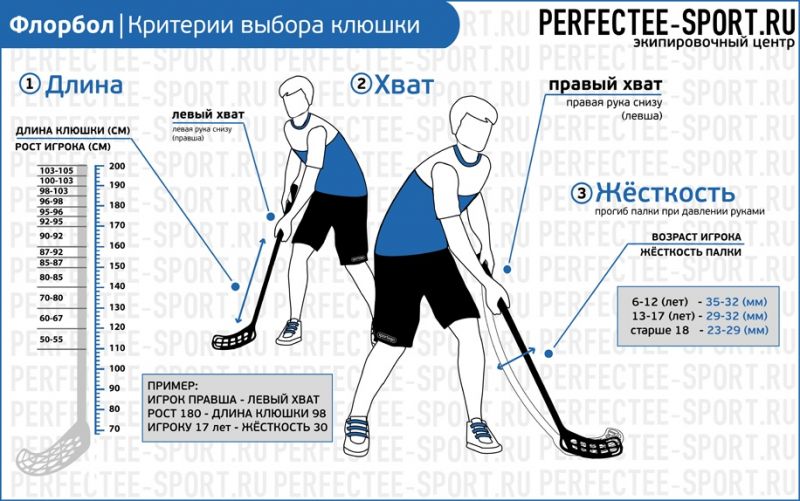
In lacrosse, longer sticks can generate more shot power, but control suffers. Finding the optimal length to balance both is key for performance.
With a longer lacrosse shaft, you can build up greater speed during your shooting motion. This allows you to whip the stick head faster at release, transferring more energy to the ball. The extra length also creates more leverage to flex the shaft, amping up velocity.
However, an overlong stick makes quick shooting motions and accuracy more difficult. Too much length prevents tight command of the ball to hit your target consistently. The limited control can also reduce passing speed and crispness on tight feeds.
The sweet spot length provides enough power while still allowing precise shooting. For most male players, this ideal range is around 42-60 inches. Testing different lengths to find where your shot control and velocity maximize is key.
To add power without just length, focus on shooting form and mechanics. Increase your wind-up, get full body rotation, and follow through completely. Strengthening your hands, arms and core also builds shot power no matter the stick length.
With the right lacrosse stick length matched to your height and shooting style, you can unleash maximum power and precision on goal. Find that ideal balance of whip for heat and control for accuracy to take your shot to the next level.
The Relationship Between Lacrosse Stick Length and Ball Control
In lacrosse, stick length significantly impacts a player’s control and command of the ball. Shorter sticks provide tighter handling, while longer shafts sacrifice some ball control for wider passing lanes and checking range.
With a shorter stick, players can cradle the ball more closely to keep it secure. Quick stick passes and tight feeds become easier with the tighter command. Shorter lengths also allow for quicker shooting motions and greater accuracy on goal.
However, sticks that are too short limit your passing vision and power. Trying to check or intercept with an undersized stick becomes difficult due to the reduced reach. Goalies lose some ball protection and outlet passing strength with sticks too short.
The ideal length provides a blend of control and range depending on your position and needs. Attack players may opt for 30-40 inches for stick tricks and quick feeds, while defenders choose 50-60 for passing lanes and poke checks.
Test out various lengths during practice drills to find your optimum balance. Focus on cradling, scooping ground balls, passing, and catching while transitioning between lengths. The right size will give you fluid command without sacrificing power.
With a properly fitted lacrosse stick, you gain the tight control for precise feeding and shooting along with the length your position requires. Find that ideal size for ultimate command of the ball on the field.
Sizing Your Lacrosse Stick by Measuring Arm Span
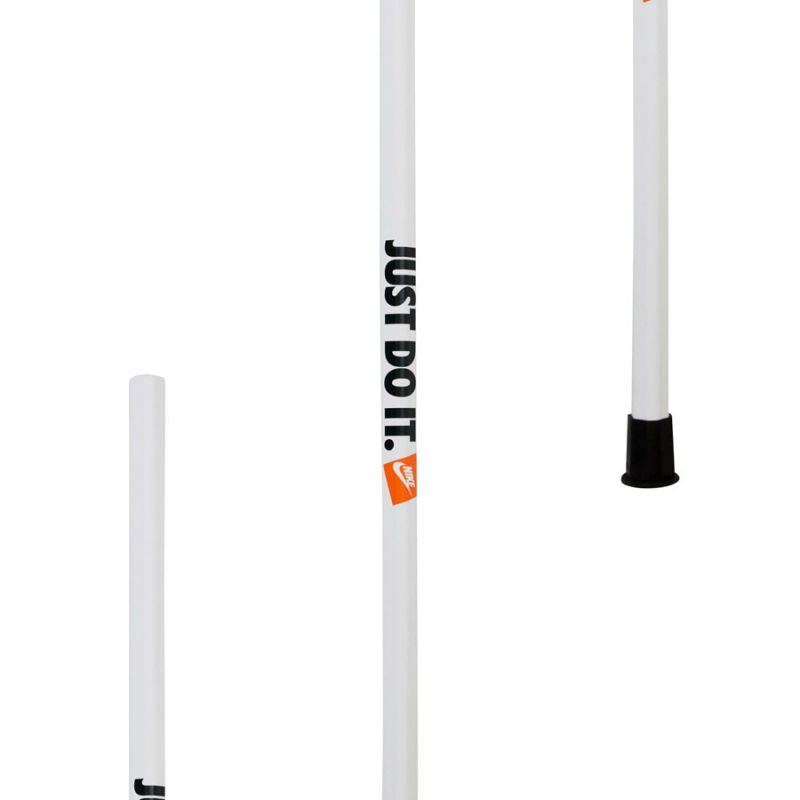
One way to size the ideal lacrosse stick length for your body is by measuring your arm span from fingertip to fingertip and comparing to standard length charts.
To measure arm span, stand with your arms fully extended out to the sides parallel to the ground. Have a partner measure from the tip of one middle finger across your chest to the other middle fingertip. Round up to the nearest inch.
Compare your arm span measurement to lacrosse stick sizing charts to find a recommended length range. Arm span generally correlates to height, so these charts aim to provide stick lengths suited for your overall size and wingspan.
For example, an arm span between 65 to 69 inches would indicate a youth stick around 36 to 42 inches. 50 to 54 inch arm span suggests a senior stick in the range of 42 to 48 inches. Use your exact arm span measurement to narrow down the options.
While a useful starting point, arm span alone doesn’t determine optimum lacrosse stick length. Factors like position, experience level, and personal preference matter too. Always test out different lengths to find what provides the best feel and handling.
Consider arm span a guide when fitting lacrosse sticks, but the final length comes down to control, comfort and performance on the field. Let your arm wingspan point you toward potential sizes, then choose through hands-on testing.
Sizing Your Lacrosse Stick Based on Height
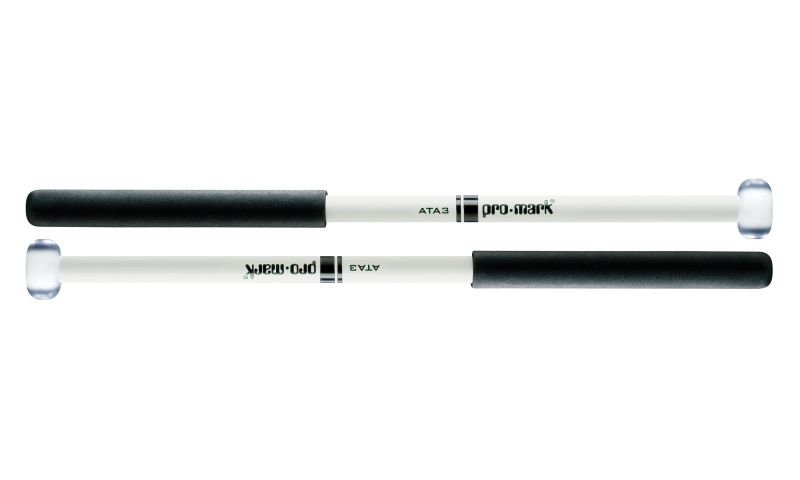
Another way to determine appropriate lacrosse stick length is by matching it to your height. Height-based stick size charts can provide a starting point for choosing the right length.
For youth players, stick length typically increases alongside their growth in height. Shorter sticks help develop fundamentals, while longer poles add range as kids get bigger and stronger. High school and college players continue sizing up for checking range and passing vision.
Consult general stick sizing charts that recommend lengths based on height ranges. A youth player measuring 4’6″ to 5′ tall would likely use a stick from 42 to 48 inches. For a 6′ college athlete, an attack stick around 40 to 42 inches makes sense.
These height-to-length correlations aim to provide a properly proportioned stick for your frame. A stick that is too long or short for your height can hinder performance and injury risk. Matching size prevents overextending on checks, scoops, or passes.
While useful baselines, height charts are starting points when fitting lacrosse sticks. Test different lengths and find what allows you to cradle, pass and shoot most smoothly. Let height be a guide, but choose your stick based on comfort and control above all.
Issues Caused by Using Lacrosse Sticks That Are Too Long
Lacrosse sticks that are too long for your height and ability level can negatively impact performance and increase injury risk. Here are some of the issues caused by using an oversized lacrosse stick:
Excessive length makes precise stick handling more difficult. Too long of a stick prevents tight command of the ball during cradling, catching, scooping, passing and shooting motions. This leads to decreased control and accuracy.
With an overlong stick, players often have to reach and extend too far when scooping ground balls and taking faceoffs. This awkward overextension strains muscles and joints, raising injury potential.
Oversized sticks throw off ball and body positioning, wrecking mechanics. Shooting form suffers when your hands sit too far from your body’s core power. passes lose zip with length limiting snappy wrist action.
The exaggerated leverage of an extremely long pole decreases stick responsiveness. This makes precision poke checking difficult, and can prevent quick reactions for goaltenders trying to make saves.
Excess length also encourages bad habits like one-handed cradling and relying on stick length rather than fundamentals. Focus narrows to stick reach instead of intelligent positioning and skills.
While some added size generates power, lacrosse sticks that are disproportionate to your frame only limit ability. Find the optimum length for quickness, control and safety on the field.
Problems Caused by Using Lacrosse Sticks That Are Too Short

While lacrosse sticks that are too long create issues, undersized sticks also hamper performance and safety. Here are some of the problems caused by using lacrosse sticks that are too short:
Undersized sticks limit your passing range and vision. Unable to see open teammates or make long outlet passes, your passing options shrink. Checks and intercepts also become harder without sufficient length.
With a shortened stick, you lose power on shots, checks and clears. Without enough shaft to build velocity, your ball speed and power decrease. This puts you at a disadvantage in physical contests.
Precise stick tricks, quick feeds and tight cradling depend on keeping the ball close with a shorter stick. But go too short, and your close-quarters handling still diminishes due to restricted motion.
Shortened sticks make one-handed play more necessary by reducing your reach. This leads to risky over-reliance on one hand to cradle, pass and catch while exposed.
When stick length is too short for your height, you have to bend, stoop and overextend to scoop ground balls. This strains your back and neck while increasing injury chances.
While control improves initially with shorter lacrosse sticks, going too short sacrifices range of motion and power. Find a length that optimizes both control and physical ability for your game.
Experimenting with Different Lacrosse Stick Lengths to Find Your Ideal Size

Rather than relying on charts or measurements alone, the best way to find your optimal lacrosse stick length is to experiment hands-on with different sizes.
Try out various stick lengths during shooting, passing, ground ball and defensive drills. Focus on how each length affects your control, speed, power and accuracy. Notice if shorter sticks provide better ball control at the cost of power or vice versa.
Test both longer and shorter lengths outside your usual comfort zone. You may discover an attack stick slightly longer than usual gives you more outside shooting range and better poke check leverage.
Evaluate how different lengths impact your mechanics on fundamental skills. Be aware if a certain length forces you to break form when shooting, scooping ground balls or passing and adjust accordingly.
Don’t make quick judgements – stick with each length for a full practice to determine how it performs in all facets of the game. See how you feel physically after significant use to assess fatigue and strain.
By experimenting with lacrosse sticks above and below your current size, you can zero in on the length that optimizes your ability. Don’t settle for the status quo – explore different lengths to find your ideal fit.
The Benefits of Adjustable Length Lacrosse Sticks
Adjustable lacrosse sticks with interchangeable shafts allow you to customize length based on your needs. Here are some benefits of using an adjustable stick:
You can experiment with different lengths without buying multiple sticks to find your ideal size for passing, shooting, ball control and checking range.
As you grow and gain experience, you can increase length over time without needing new equipment each season. Extend adjustable youth sticks as kids hit growth spurts.
Players can size down for indoor lacrosse or box lacrosse then return to full length for field lacrosse with a quick shaft swap.
Adjustability enables modifying stick length for specific game situations. Add length to help clear the ball against the ride, then size down for aattacking dodges.
If playing multiple positions, like LSM and close defense, you can customize stick length to fit each role instead of compromising with one “in-between” stick.
You can match your stick to preferred playing style. Short shafts provide better stick skills and handling, while longer poles stretch your range and vision.
With adjustable lacrosse sticks, you gain the versatility to switch lengths whenever needed. Dial in the optimum size for your needs and style of play.
The Importance of Getting Properly Sized Lacrosse Sticks
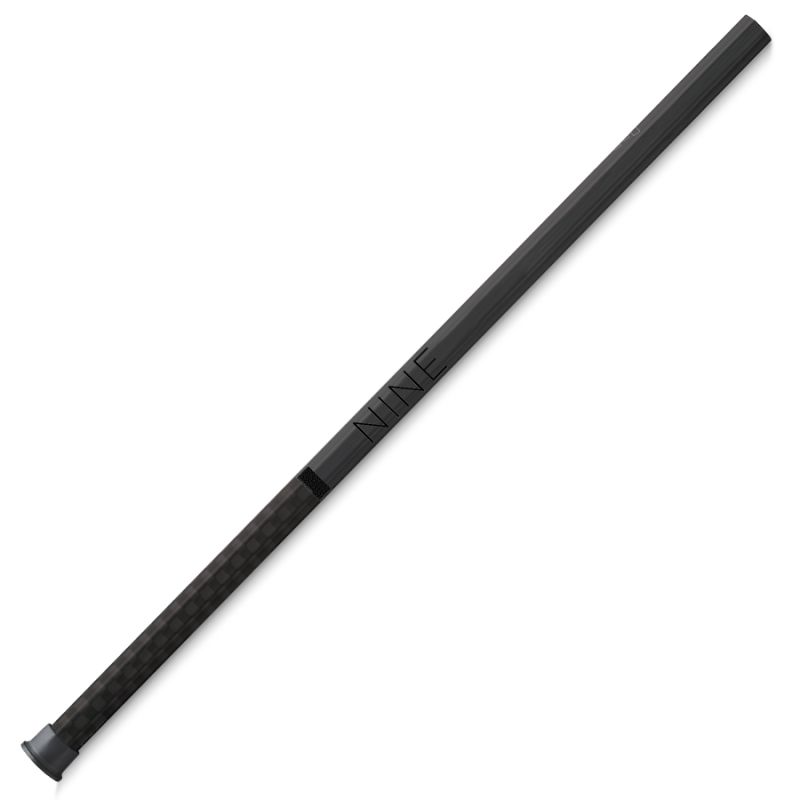
Using a lacrosse stick that is the right length for your body and ability level is vital for maximizing performance and reducing injury risk.
Properly sized sticks allow you to cradle, pass, catch, scoop and shoot with control and power. With the correct length, you can utilize proper mechanics and form instead of overextending on every maneuver.
Sticks that are too long or short force you to use poor technique by constantly reaching outside your optimal range of motion. This leads to inefficient play and strains muscles in ways that increase fatigue and injury potential.
With a well-fitted stick length, you can take full advantage of your athleticism. Optimal size translates to quicker feeds, more accurate shots, better scooping leverage, and wider poke check range.
The right lacrosse stick length also boosts confidence in your skills. You can cradle smoothly, direct passes precisely, and rip off accurate shots using sound form.
Take the time to find your ideal lacrosse stick length based on your height, experience level, and position. Proper sizing sets you up for lacrosse success and keeps you healthy on the field.
Tips for Getting Properly Sized for Your Lacrosse Stick
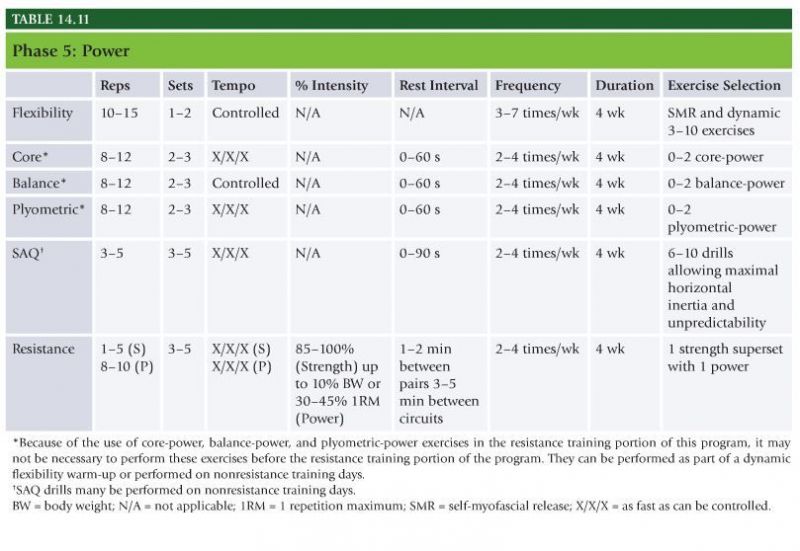
Finding the optimum lacrosse stick length to match your physique and position is crucial. Here are some tips for getting properly sized:
Consult general sizing charts based on factors like your age, height, and position to get an initial length recommendation. Use these as a starting point when selecting sticks to try.
Test sticks above and below your current size – don’t just make small adjustments around your habitual length. You may find better performance with significant changes.
Try lengths in real game situations – full scrimmages and drills. Don’t just cradle and pass unopposed to gauge feel. See how length affects play against live defense.
Give each test length an extended tryout of a few practices at minimum – don’t make quick judgements. You need significant time to adjust to size changes when determining fit.
Focus on stick control, mechanics and feel as you size up and down. Make sure fundamentals don’t suffer or force you to overextend at any length.
Consider adjusting your lacrosse stick length for indoor versus field play based on the space and style of each game.
Don’t fret small length fluctuations – an inch or two variance is normal. Dial in the general range that performs best through testing different sizes.
With smart trial and error, you can find your ideal lacrosse stick length for the control, power and safety you need to excel.